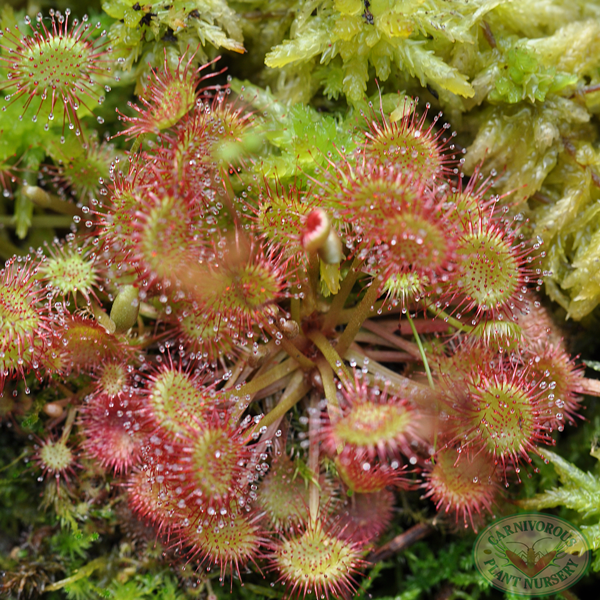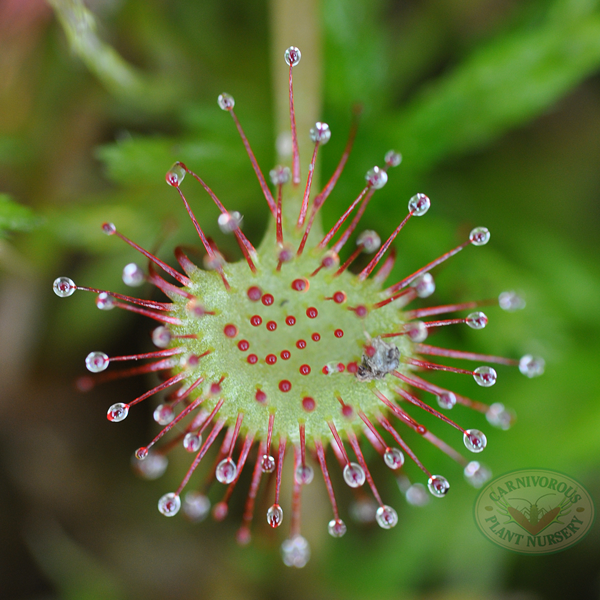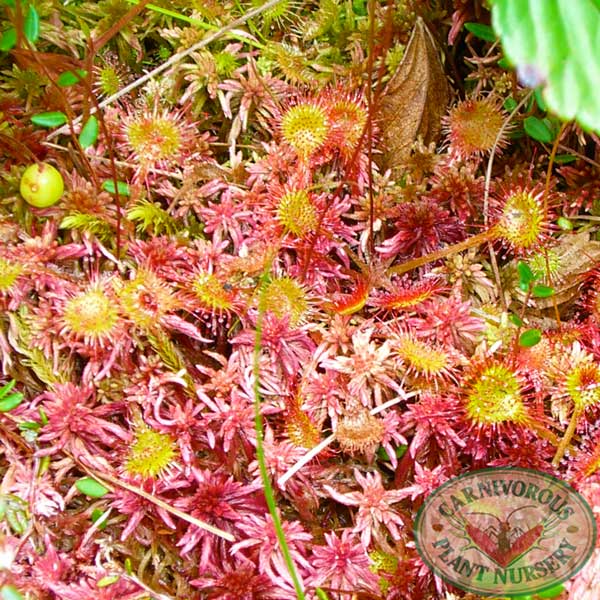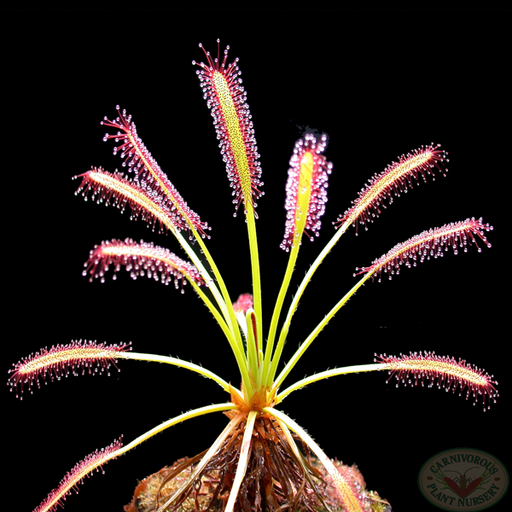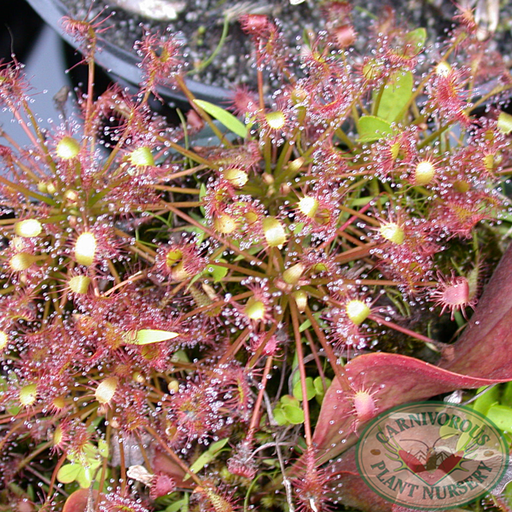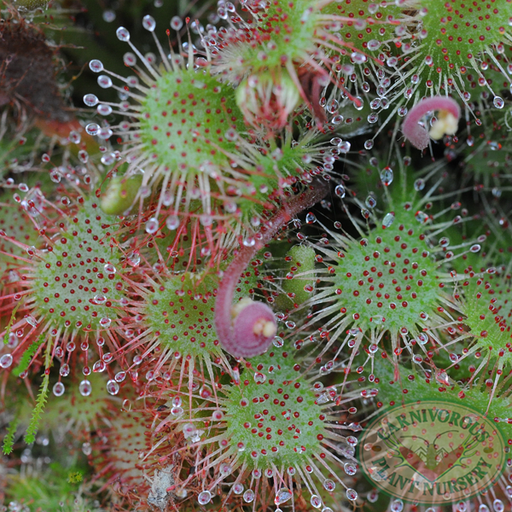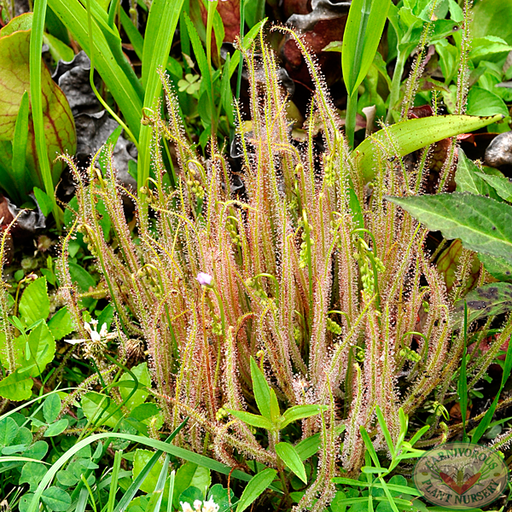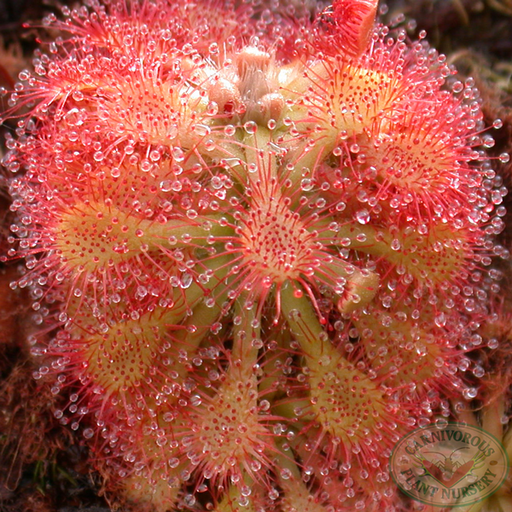Drosera rotundifolia
Ease to Grow: Easy
Dormancy: Required
Native Range: Wet Bogs of northern North America, Europe and Asia
Zones: 3-8 (2-9)
Drosera rotundifolia or Round-leaved Sundew is aptly named. Its round traps are lime green with long red sticky tentacles. It is of medium height, and prefers growing in and among sphagnum moss, where it keeps up with the fast growth of the moss. It does well growing with other bog plants, where it receives mottled sunlight. It does not tolerate temperatures over 85°F very well. This round-leaved plant emerges late in the Spring and lasts throughout the Fall. It forms a hairless winter hibernacula (resting bud), which is best pushed down to the surface in early Spring for best growth. The small flowers are white with occasional pink veins on scapes with multiple blossoms. It flowers from June to September. It frequently produce abundant seeds, giving it a nice spreading habitat. Seeds need to be stratified (cold, damp winter storage). It is wide-spread in its range through North America and Europe. Drosera rotundifolia is probably the most studied of all the Drosera. Charles Darwin experimented more with the carnivorous habit of the Round-leaved Sundew than with Dionaea. It is a nice plant for a terrarium, the collection or growing in the bog garden. This selection comes from seed, and will show some natural variations. For maximum effect use multiple plants in a 6" pot.
Drosera rotundifolia was the first species of Drosera to be named and is the type species of the genus. It was also the center piece of Darwin's experiments to prove plant carnivory.
Plants are shipped bare-root, wrapped in damp sphagnum moss. In their dormant season, they will be shipped as dormant hibernacula. Photographs are representative of species, and not the specific Drosera rotundifolia plant for sale.
Height: 1" - 2"
Plant Type: Cold Hardy Perennial
Soil: Lower Bog Mix or All Purpose Mix or Live Sphagnum Moss
Light: Bright indoors, full sun to partial sun outdoors
Use: Grows well in the soggy bog garden, greenhouse and indoors. It is a good plant for terrariums, but must be provided dormancy.

